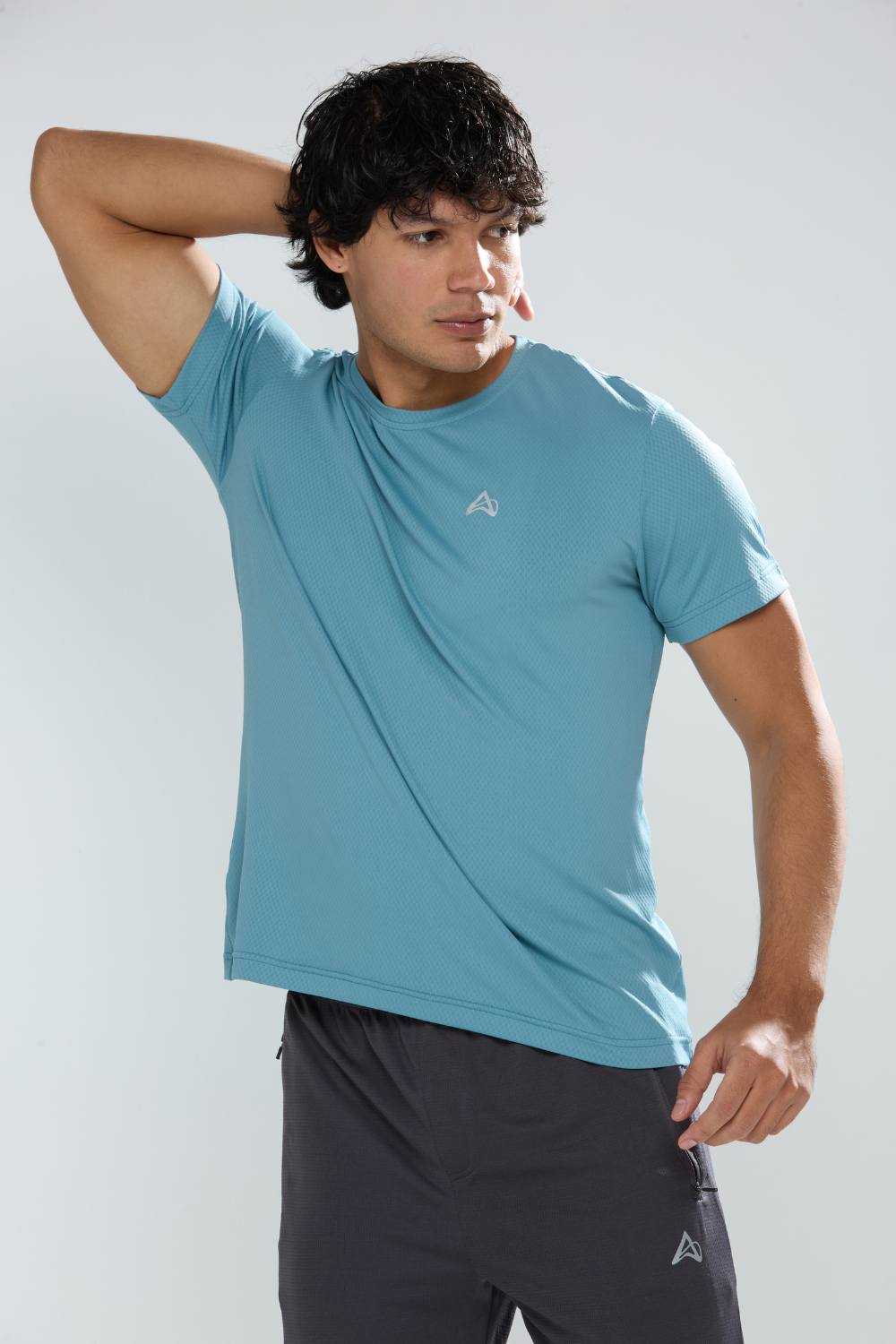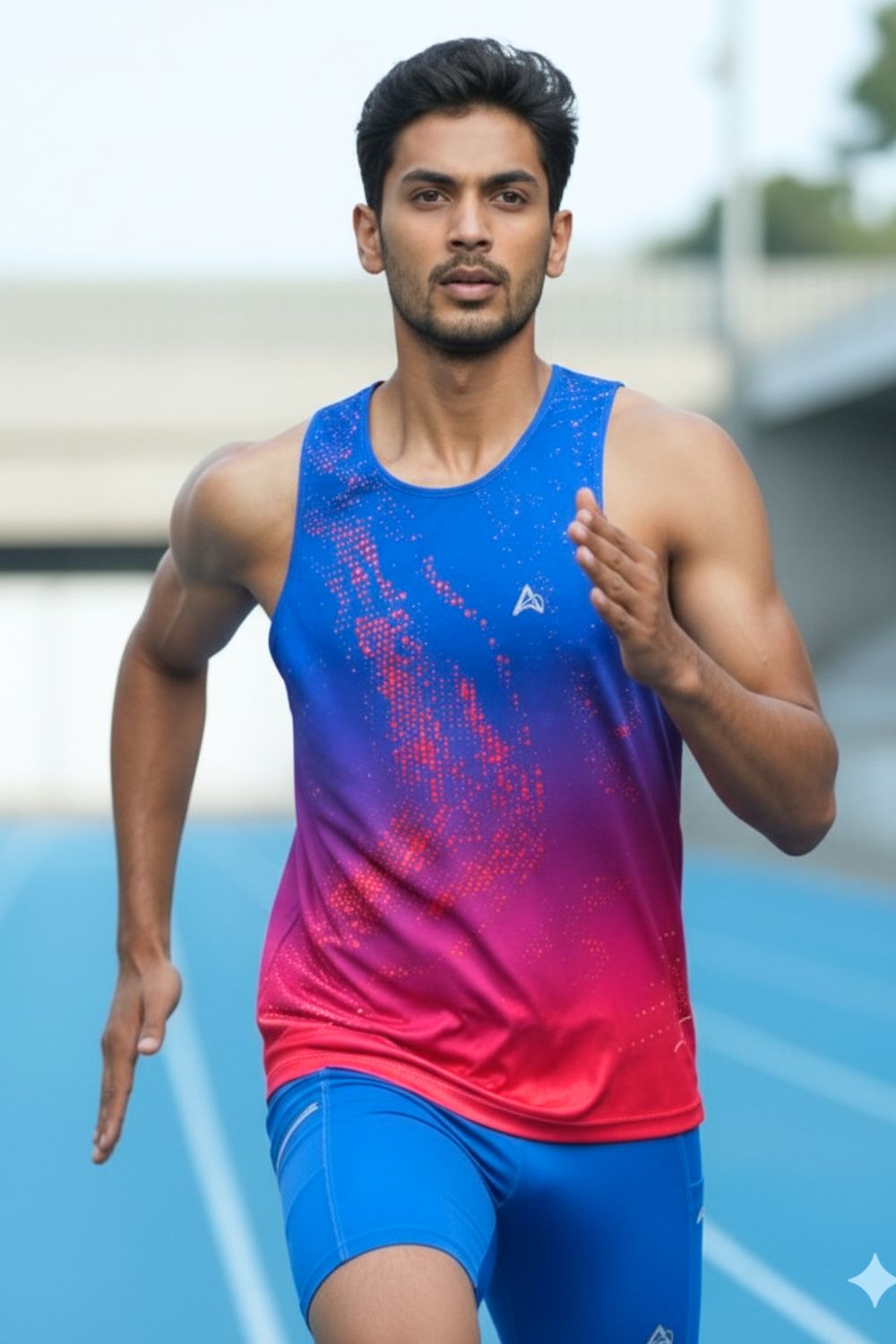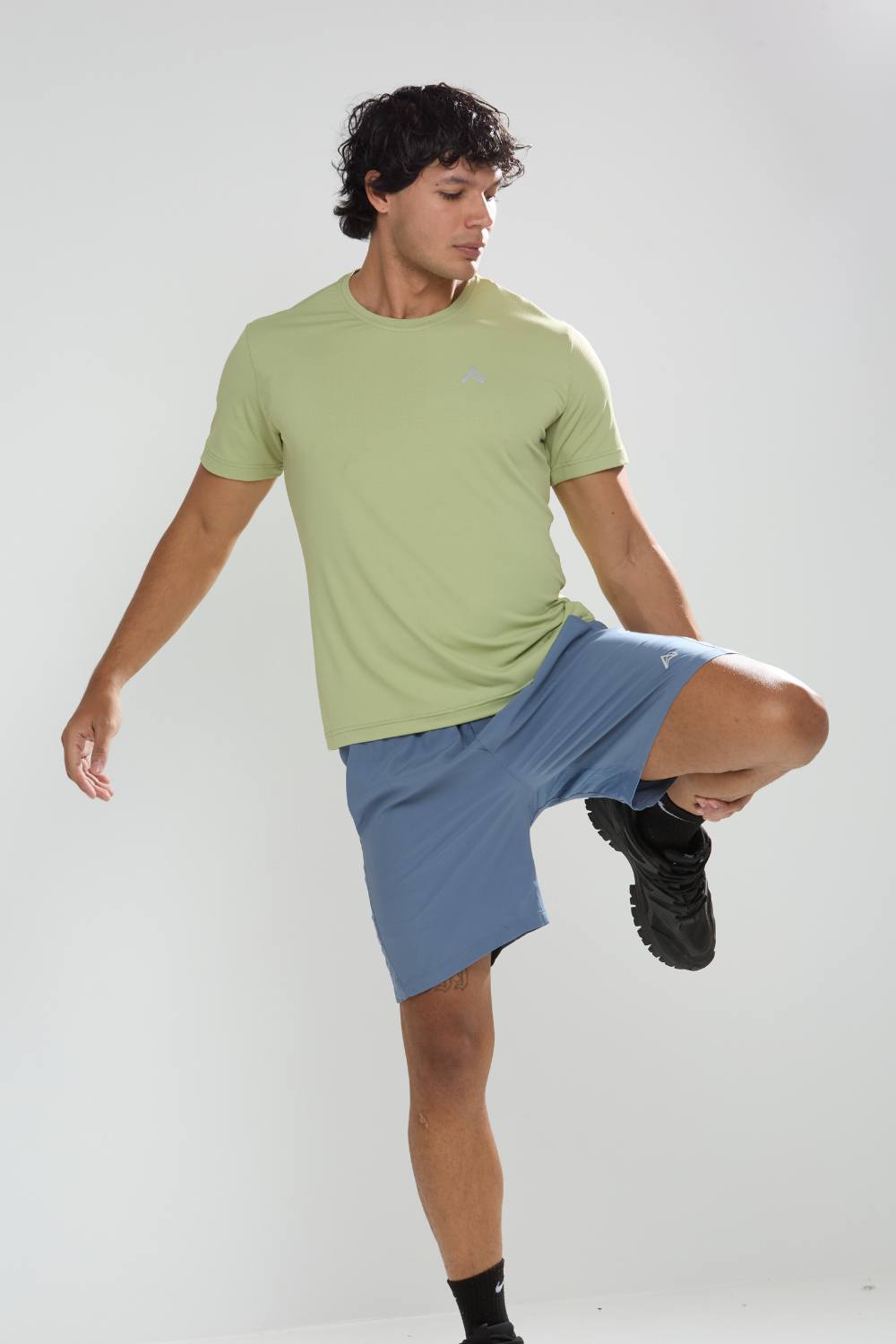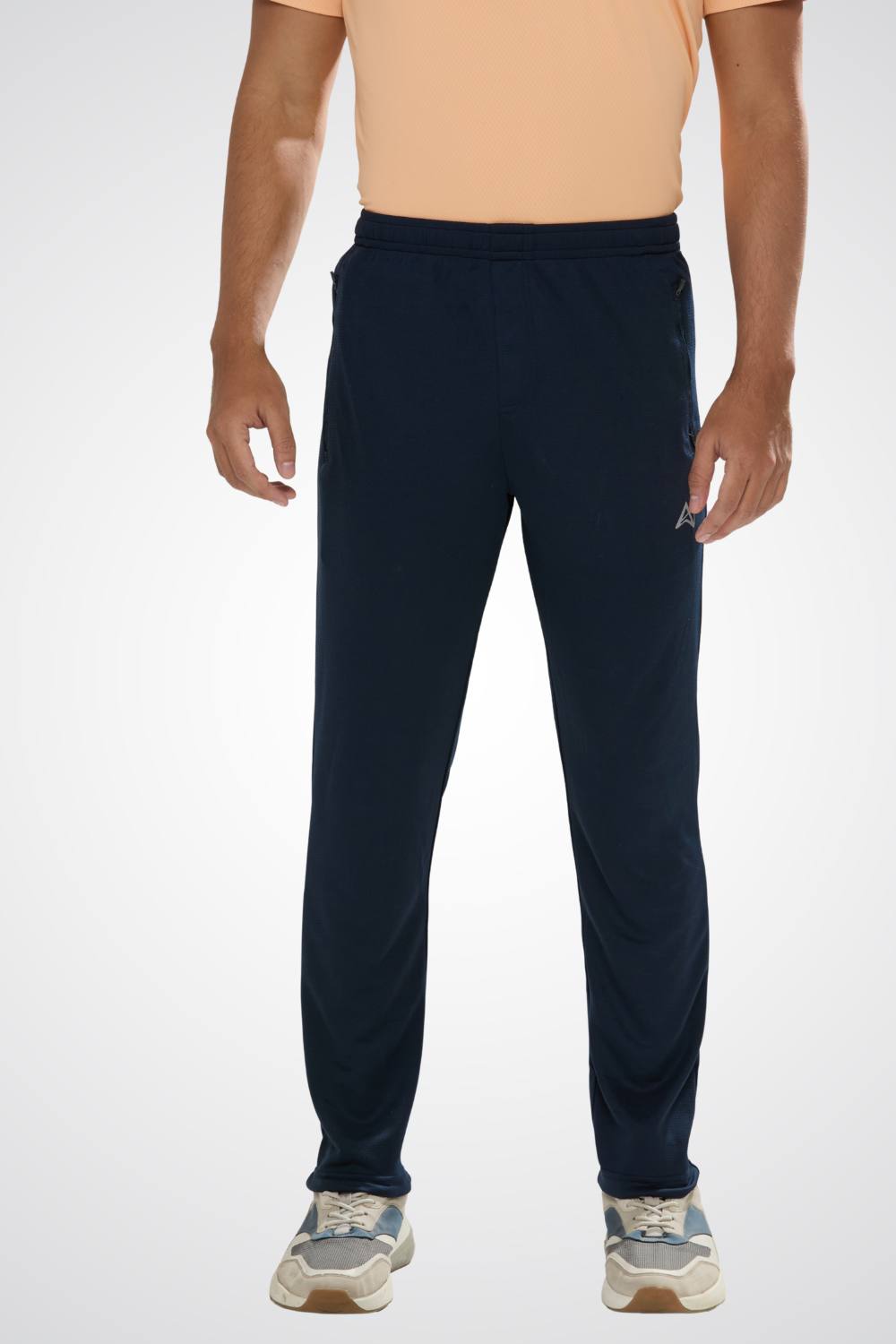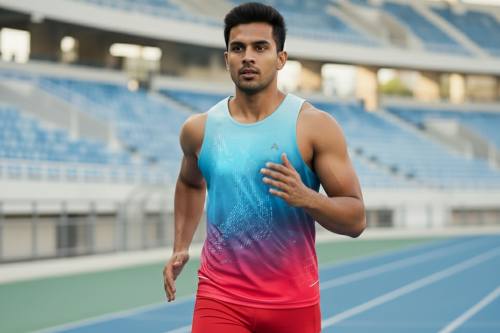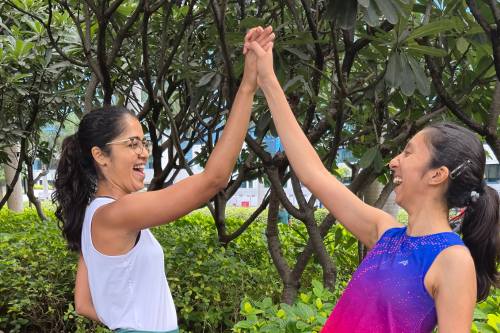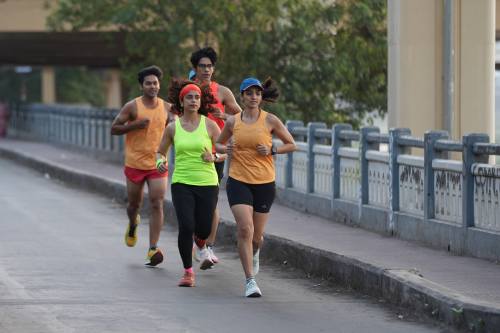Quick Listen:
Picture this: the crack of dawn slices through the urban haze, and a sea of determined faces lines up at the starting corral. Neon-clad athletes fiddle with earbuds, bounce on their toes, and steal glances at the horizon. For the newcomers, it's a modest 5K loop through neighborhood streets; for the veterans, it's the prelude to a full marathon grind. This electric anticipation captures the essence of modern running a relentless pursuit of personal horizons, where each stride builds on the last. What was once the domain of elite athletes has democratized into a global movement, with event participation surging 39% year-over-year in 2024, as detailed by the Great Run Company. At the heart of this phenomenon? A strategic embrace of progressive goals, from novice dashes to endurance epics, supercharged by cutting-edge activewear that turns ambition into endurance.
Tired of gear that slows you down? Chafing, soggy fabrics, and missing pockets kill your run's momentum. At Aguante, we're runners who get it. Our high-performance activewear features moisture-wicking fabrics, ergonomic designs, and smart storage to keep you focused. Shop Now!
From Couch to Marathon: The Power of Progressive Goals
Running transcends mere exercise; it embodies a narrative arc of transformation. Envision the novice, lured from the sofa by a friend's challenge or a viral app prompt, lacing up for that inaugural 3.1-mile jaunt. Success there ignites the fire for a 10K, then a half-marathon's 13.1 miles of tested resolve, culminating in the marathon's mythic 26.2. This ladder of achievement isn't arbitrary it's a psychological scaffold, fostering resilience and dopamine-fueled momentum. Data from the Great Run Company's 2024 Rewind24 Report underscores this allure: among over 180,000 participants in events spanning 5K to half-marathons, a striking 53% were first-timers, many propelled to bolder distances by the thrill of completion. This isn't fleeting hype; it's a seismic shift toward running as identity, woven into daily rhythms from dawn jogs to weekend trail escapes.
Enter performance apparel, the unsung architect of these odysseys. Far from static wardrobe staples, today's gear morphs with the runner's evolution, offering layered support that mirrors their escalating demands. Consider the global running apparel sector: analysts at Deep Market Insights peg its 2025 valuation at USD 23.4 billion, forecasting expansion to USD 32.7 billion by 2030 at a steady 6.9% CAGR. This trajectory stems from a confluence of factors heightened recreational running engagement, the fusion of smart fabrics with biometric sensors, and a surge in multifunctional pieces blending rigorous training with casual wear. Such dynamics not only sustain momentum but redefine accessibility, ensuring that as runners scale their ambitions, their attire keeps stride without missing a beat.
Why does this matter? Progressive goals dismantle the intimidation factor. A marathon looms like Everest for the uninitiated, but chunking it into digestible races builds confidence and physiological adaptations stronger lungs, fortified tendons, a honed mental edge. Apparel amplifies this: early-stage kits prioritize comfort to hook beginners, while advanced lines deliver precision engineering for peak performance. Brands recognize this continuum, crafting narratives around gear that "grows up" with users, from anti-blister socks for 5Ks to aerodynamic vests for marathons. In essence, it's a symbiotic dance goals propel runners forward, and apparel ensures they arrive intact and inspired.
Innovation at Every Step
The renaissance in running coincides with a gear revolution that's as tactical as it is transformative. No longer confined to basic tees and shorts, the industry pulses with ingenuity, where fabrics don't just clothe but coach. Dominating shelves are performance tights and compression tops, the heavyweight champions of running wardrobes, embraced by everyone from weekend warriors to semi-pros for their prowess in curbing fatigue and accelerating rebound. Deep Market Insights highlights their ubiquity, noting how these items anchor the market's core, especially amid North America's leadership and Asia-Pacific's blistering ascent, the latter turbocharged by city-dweller's fitness fervor and state-backed athletic drives.
Peering ahead, smart textiles herald a new era. Imagine shirts laced with sensors that whisper real-time intel on stride efficiency or fluid levels tools once reserved for labs, now democratized for the masses. This integration spawns fresh categories, like gait-tracking embeds that fine-tune form mid-run, or recovery monitors that flag overexertion before it bites. Mordor Intelligence attributes the broader market's vigor pegged at USD 90.44 billion in 2025 and barreling toward USD 131.89 billion by 2030 via a robust 7.84% CAGR to escalating wellness consciousness, material breakthroughs, and the seamless merge of high-octane function with everyday style, captivating demographics from teens to seniors.
Gender dynamics add another layer of intrigue. Women's ingress into running circuits has catalyzed bespoke innovations: silhouettes sculpted for feminine biomechanics, textiles tuned for thermoregulation, and palettes that empower rather than conform. This isn't tokenism; it's market savvy, as female-specific lines proliferate to match the narrowing participation chasm. Parallelly, sustainability surges as a creed recycled polymers and bio-based yarns proliferate, though innovators grapple with preserving top-tier wicking and longevity. In mature economies, premium tiers flourish; in burgeoning ones, urban sprawl and wage swells propel adoption. Asia-Pacific exemplifies this, where policy-fueled sports booms intersect with apparel's adaptive edge, ensuring no runner lags behind.
These advancements aren't abstract; they manifest in tangible edges. A sensor-laden top might shave seconds off a personal record by optimizing hydration cues, while inclusive sizing democratizes elite-level support. The result? A ecosystem where innovation isn't flashy gimmickry but a credible ally, bolstering runners as they navigate from tentative trots to triumphant ultras.
Real Stories, Real Gear
Abstractions gain grit through lived trials. Envision the archetype: a city professional, sparked by a charity 5K in baggy gym shorts, unearths a latent zeal that demands more. Fast-forward months now outfitted in seamless, sweat-repelling layers, they're conquering half-marathon hills, trail runners gripping uneven terrain like old friends. The U.S. running footwear arena mirrors this metamorphosis, clocking in at USD 7.5 billion in 2024 and eyeing USD 10.82 billion by 2030 with a 6.3% CAGR, propelled by trail variants riding the ultra-marathon wave and hybrid sneakers infiltrating office attire. Off-road fervor, amplified by nationwide endurance spectacles, underscores demand for rugged treads that conquer mud and mileage alike.
At events like the Great North Run, anecdotes abound. One competitor, fresh from a 20-mile slog, lauds compression leggings for muting post-run aches, crediting them as the linchpin in marathon readiness. Such testimonials aren't outliers; they're the industry's lifeblood. Apparel giants forge pacts with race stewards, disbursing bespoke race-day uniforms featherlight tops for sprinters, bolstered soles for distance demons. Tiered assortments emerge too: novice bundles with forgiving fits, elite arsenals boasting carbon-infused plates. These aren't mere transactions; they're communal threads, weaving solitary pursuits into tapestry of shared victories, where gear becomes the silent coach in every pack.
Beyond races, ecosystems coalesce. Apps sync with wearables to prescribe outfits per workout light layers for speed sessions, armored shells for tempests. This personalization cements loyalty, turning one-off buys into lifelong arsenals. In the U.S., corporate wellness incentives sweeten the pot: subsidies via health plans spur sneaker splurges, blending vocational perks with vitality boosts. Athleisure's hybrid allure further blurs lines, as boardroom-approved kicks double as trail tamers, inflating sales across silos.
Hurdles on the Horizon
Glory has its gauntlets. Foremost: safeguarding against setbacks. Pinnacle gear mitigates micro-traumas compression quells vibrations, orthotic insoles cradle arches but it's impotent sans sound regimens. Overzealous pacing in fancy fits still courts IT band woes or stress fractures; apparel augments, never absolves. The bazaar brims too, a gladiatorial pit where upstarts battle behemoths for shelf space. Differentiation demands audacity perhaps via niche eco-lines or AI-tailored fits lest they drown in sameness.
Cost looms large, a velvet rope barring entry-level enthusiasts from premium realms. While efficacy justifies tags, it risks entrenching divides, sidelining those for whom a $200 jacket spells sacrifice. Sustainability's siren call compounds this: verdant yarns shine ethically but may falter in wash-wear wars, pitting planet against pace. Emerging frontiers, ripe with promise, face fiscal frictions skyrocketing costs could stifle grassroots booms. Yet countervailing winds blow: Asia-Pacific's fiscal upticks and civic fitness mandates kindle inclusive ignition, urging marques to calibrate value with vanguard.
Navigating these requires candor. Brands must democratize via affordable tiers or rental models, while runners heed holistic prep cross-training, nutrition, rest. Only then does progression prevail over peril.
Opportunities in Every Stride
Shadows yield to sunbursts. Apparel titans eye holistic realms: curated kits syncing kicks, garb, and gadgets to mileage markers, yielding frictionless flows. E-commerce hubs and virtual tribes nurture allegiance, algorithms dishing drill-down counsel from pace logs. U.S. paradigms evolve employer rebates fuel fleet-footed investments, as insurers reward robustness with reimbursements. Athleisure's crossover catapults volumes, morphing sneakers from gym exclusives to sartorial staples.
Vista-rich vistas beckon abroad. Long-haul legacies sprout in Asia-Pacific soils, inviting locale-tuned tweaks arid-adapted weaves, heritage hues. Wearable-fueled foresight promises bespoke blueprints: analytics birthing custom cloaks, regimens keyed to kinetics. This presages a golden age, where data democratizes dominance, empowering every entrant to elite-esque exploits.
A Finish Line That's Just the Start
Dawn gilds the skyline as hordes hurtle forth in a symphony of purpose PB predators, finish-line revelers, all unified in incremental audacity. Apparel's ascent, steadfast through 2030's gaze, transcends commerce; it's camaraderie in cloth, mirroring runner's ascents with adaptive artistry. AI-orchestrated drills, equitable ergonomics, neural fabrics await, forging solitary quests into societal swells. Herein lies running's rapture: terminals beget takeoffs, horizons ever receding, illuminated by ingenuity's gleam. Lace up; the trail beckons boundless.
Frequently Asked Questions
What are the latest innovations in running gear for marathon training?
The latest running gear innovations include smart textiles with embedded sensors that monitor gait efficiency and recovery metrics in real-time, compression garments engineered for specific biomechanics, and sustainable materials that maintain high-performance wicking properties. Advanced features like carbon-infused plates in footwear, AI-tailored fits, and gender-specific designs optimized for different running biomechanics are becoming standard. These innovations are driving the broader athletic apparel market toward an estimated $131.89 billion by 2030, with wearable-integrated clothing leading the transformation.
What role does running apparel play in achieving marathon training goals?
Modern running apparel acts as a performance enhancer that evolves with runner's advancing goals, offering layered support from beginner-friendly comfort gear to precision-engineered marathon equipment. Performance tights and compression tops help curb fatigue and accelerate recovery, while smart textiles with embedded sensors provide real-time feedback on stride efficiency and hydration levels. The global running apparel market, valued at $23.4 billion in 2025, reflects how proper gear mitigates micro-traumas and supports runners as they scale from casual jogs to competitive marathons.
How do progressive running goals help beginners transition from 5K to marathon distances?
Progressive running goals create a psychological scaffold that builds confidence and physiological adaptations gradually. Starting with a 5K and progressing through 10K, half-marathon, and finally marathon distances allows runners to develop stronger lungs, fortified tendons, and mental resilience without the intimidation factor of jumping straight to 26.2 miles. This step-by-step approach has proven highly effective, with 53% of participants in major running events being first-timers who often progress to longer distances after their initial success.
Disclaimer: The above helpful resources content contains personal opinions and experiences. The information provided is for general knowledge and does not constitute professional advice.
You may also be interested in: The Environmental Impact of Running Apparel and What Aguante Is
Tired of gear that slows you down? Chafing, soggy fabrics, and missing pockets kill your run's momentum. At Aguante, we're runners who get it. Our high-performance activewear features moisture-wicking fabrics, ergonomic designs, and smart storage to keep you focused. Shop Now!
Powered by flareAI.co





